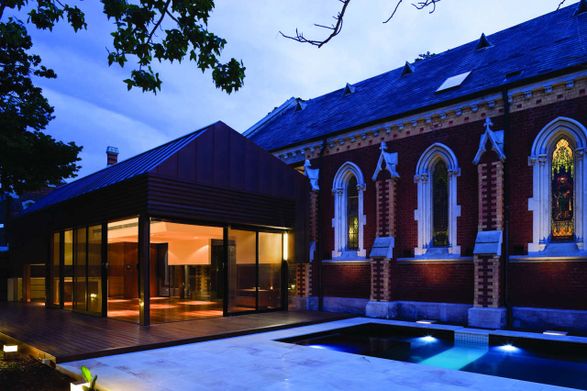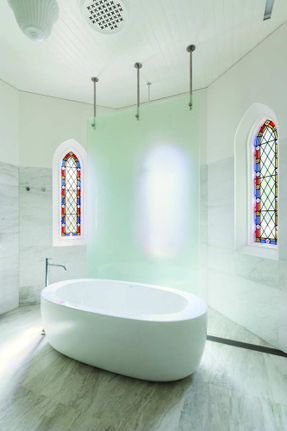
John Knox Church
ARCHITECTS
Williams Boag Architects: Williams Boag architects Pty Ltd
PROJECT TEAM
Peter Williams, Alison Freeman, Leila Allbrook
BUILDING SURVEYOR
Anthony Middling & Associates
STRUCTURAL/CIVIL
Kersulting P/L
1876 ORIGINAL ARCHITECT
Charles Webb
BUILDER
DJ Rice Pty Ltd
AREA
546.0 m2
SERVICES
Kersulting P/L
HERITAGE CONSULTANT
Bryce Raworth
PHOTOGRAPHS
Sonia Mangiapane
LOCATION
Brighton, Australia
PROJECT YEAR
2009
CATEGORY
Churches
Text description provided by the architects.
A major issue for contemporary architectural practice is the use of existing buildings. Addressing this requires a specific approach to the design process that optimises the balance between new and existing, realising a contemporary result that adds to human experience within the project and more broadly in urban terms.
There is also a growing public interest in adaptive reuse of older buildings, particularly those of a heritage nature. The Knox Church project exemplifies critical judgements that must be made on such a project, and it demonstrates to the occupant and wider community that the reuse of an existing building does not inhibit delivery of an exciting contemporary building and interior.
Our fundamental position was to intervene as little and as carefully as possible in the 1876 Charles Webb designed, polychrome brickwork church. The Church was converted to a residence that met the client’s brief without compromising the building’s history or presence in the neighbourhood.
The client’s functional brief established necessary functions for inclusion, but it also provided an understanding of both the stated and unstated aspirations for the project.
This illuminated the client’s decision to purchase such a “restrictive and constrained” building in the first place, and this was critical.
A hierarchy of possible responses was assessed against the Conservation Management Plan and practical constraints, and elements were matched to the brief.
Making minimal changes to the main church structure was also important from a cost standpoint.
Working within the large volume, with its complexity at roof/ceiling level, was expensive and the design responded accordingly. We addressed the constriction of the main church envelope by putting the kitchen and family room in an attached ‘companion’ building alongside the Church.
This eliminated the need for the incorporation of a greater number of services inside the Church, limiting the need for new major openings.
Changes introduced to the site were also designed to contribute at more than one functional level - for example, the companion building also provided an external upper level outdoor space.
Maximising the use of the existing Church largely intact is intrinsically sustainable, as is the minimisation of the amount of and the energy required for new construction. Retaining the existing also conserves the energy embodied in the earlier construction of the church.
The choice of copper as the principal material for the companion building cladding was also commensurate with longevity and minimum maintenance over the life of the building.
Water collection, returned to irrigation, building management system for lighting and electrical energy control and hydronic heating are other key sustainability aspects.
Cultural sustainability is very well addressed following a lengthy process to protect the civic presence of the original complex as a much-loved community reference point in the area.
Despite the change in uses, the extent and scope of the original church complex can thus be interpreted by subsequent generations.
The consultant team comprised structural, mechanical and electrical disciplines, all of which contributed to a careful response to the constraints of the building.
Documentation was carefully integrated and construction administered by a client familiar with technical and construction matters.
























